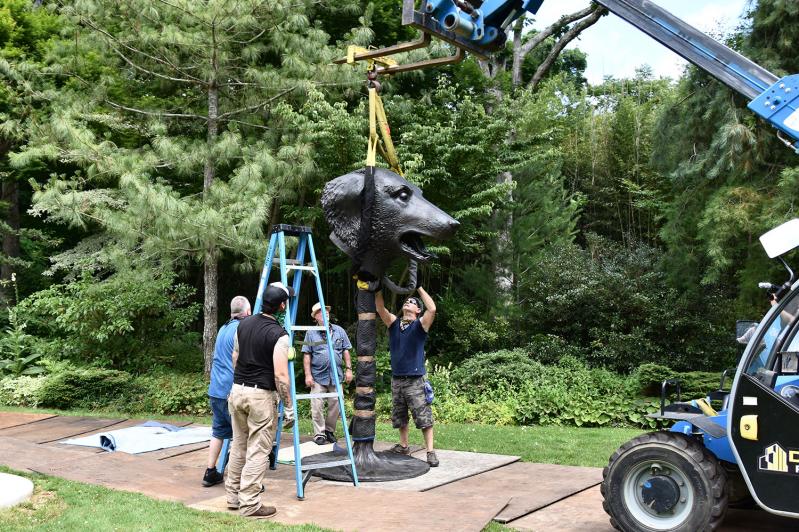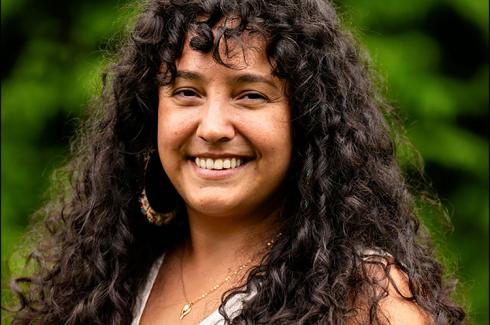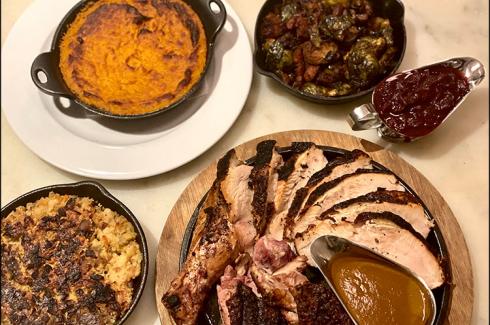Perhaps nothing captured the complexities of Ai Weiwei's "Circle of Animals/Zodiac Heads: Bronze" more than its installation at LongHouse Reserve earlier this month. The placement of the 12 sculptures, each weighing anywhere from 1,500 to 2,100 pounds, was a daylong affair involving flatbeds, a crane, brute force, and extreme care.
Few embody the contradictions of Chinese history and the peril of its current period better than the artist, who was detained for 81 days in secret captivity in 2011 and then held in China for several years longer under house arrest until he was finally released in 2015. His father, a famous poet, was a member of the Communist Party before and after the revolution in 1949, but was out of favor by 1957 and sent to a labor camp not long after his son was born.
The presentation of the heads in New York, which was their premiere in the United States, coincided with the artist's period of captivity. LongHouse first showed the piece in East Hampton in 2013. It was a smaller form in gold, designed for interior display, and was on view while the Chinese government still confined the artist to his house.
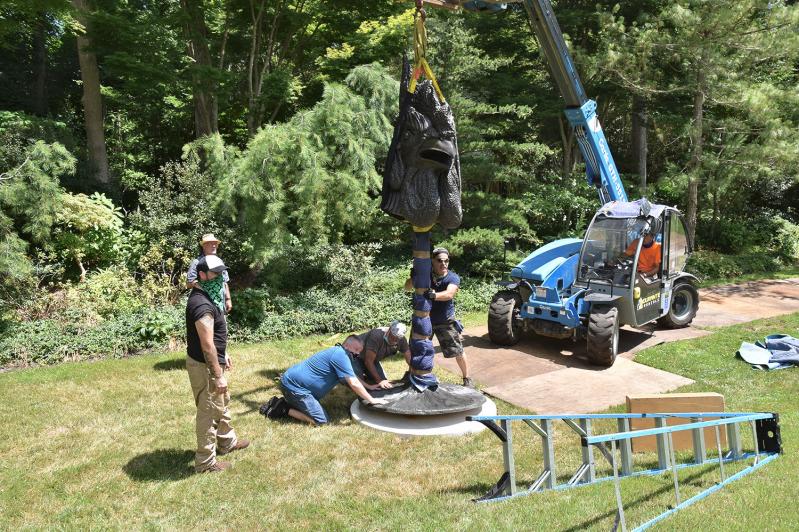
The title "Circle of Animals/Zodiac Heads" telegraphs the joyful simplicity of the sculptures' tamed appearance, tempered by Western aesthetics, and the tradition and history that Mr. Ai is clearly referencing and communicating to his compatriots. The statues represent the animals in the Chinese zodiac: rat, ox, tiger, rabbit, horse, monkey, boar (pig), dragon, snake, goat, rooster, and dog.
In a project from this year, he designed a set of cloth masks for charity featuring surveillance cameras and a raised middle finger. He clearly tempers his messages — in that case to support human rights — with a dash of seditious wit.
There is a superficial playfulness to the animal sculptures that can captivate even the youngest of children. Yet they have a deeper, more complicated meaning that encourages more rigorous intellectualizing.
Their accessibility supports the artist's conviction that "People don’t have to have too much information about the work. They should just look at the objects and see the connection through their own experience. If the work can do that, it will already be successful."
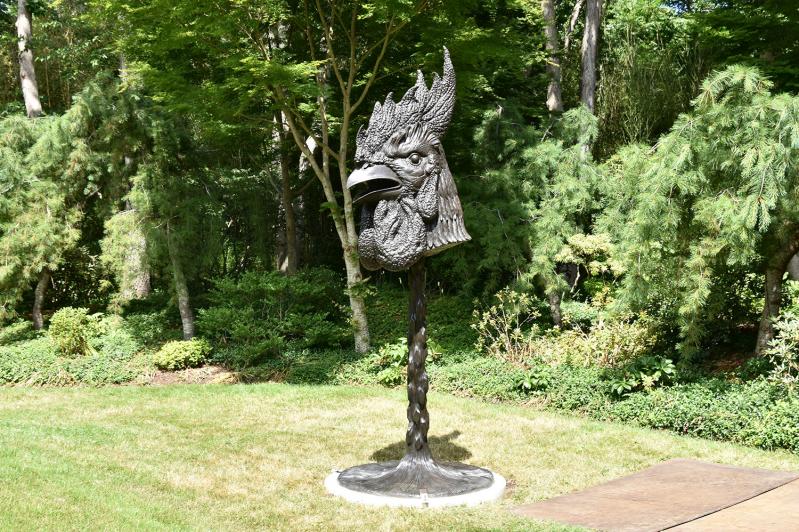
Yet they convey so much more. The idea for these sculptures came from statues made in the 18th century during the Qing dynasty, when Eastern and Western cultures mixed freely in China. They were commissioned from Giuseppe Castiglione and Michel Benoit, two Jesuits, for a fountain clock at a summer palace outside Beijing. The gardens there were designed by Europeans and were ultimately destroyed by invading Europeans in 1860. The heads were looted and five (dragon, snake, goat, rooster, and dog) are still missing.
Mr. Ai said in an interview for the original touring exhibition catalog that he did not know much about the history of the Qing dynasty, "but I think Europe must have been very cool to them. At that time, the West was relatively well developed, very scientific. They gave the emperor a lot of clocks to make him happy. At that time, Chinese people still looked at the sun’s rays and water to determine the time. So I guess they yearned for that kind of civilization."
Although he was faithful to the original statues' style in his appropriation of the subject matter, he noted that the seven that are extant are "not exactly Chinese in appearance. You know, we have all sorts of animals in Chinese painting and sculpture, but none close to this. This is a more realistic approach." Noting that the tiger looks more like a bear, he said, "That really shows traces of being made by a foreigner. It’s not really Chinese culture."
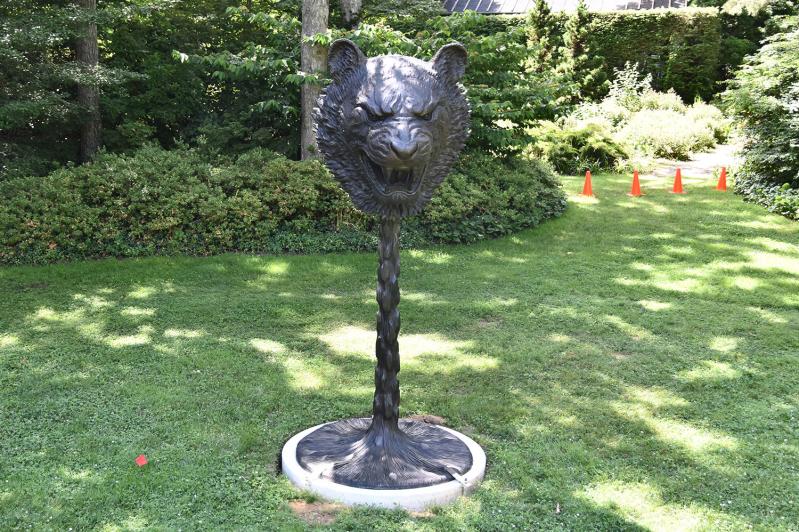
Historically, Chinese art has been more interpretive, and Mr. Ai said that was likely because they weren't that interested in reality. "Maybe they felt that what we see is not true reality, or that what we see is actually a limited version of reality. So they just made representations of the world in their hearts."
Even given the ambivalence surrounding the originals' creation by artists and artisans who were Italian and French and their reminder of a humiliating sack at the hands of Europeans, recovering and reuniting the original works has become a national objective for the Chinese. Mr. Ai said that calling them national treasures, and then reclaiming them when they have emerged, was political hype.
At the time of the interviews a decade ago, he said his artwork might cause a re-examination of the issue. "It does bring significance to these old objects. But just as decorative objects. . . . They’re just like a toilet seat, or anything else."
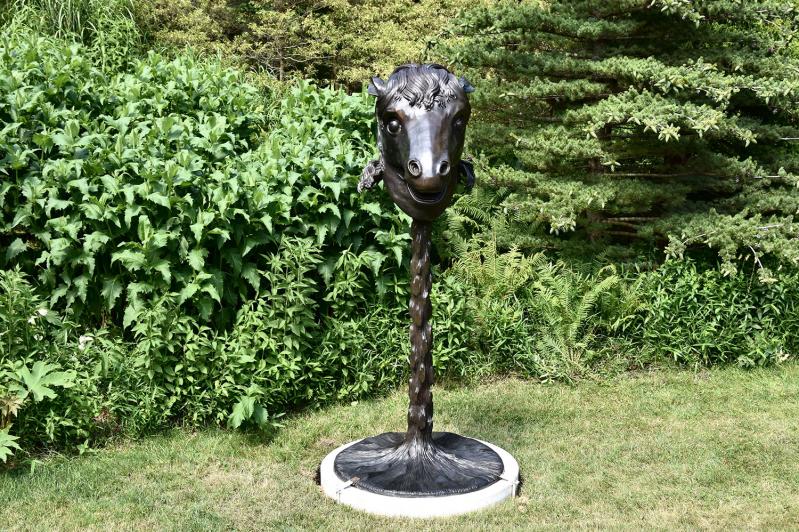
But their re-creation does not appear to have dampened the zeal. Last year, a Chinese billionaire gave the National Museum of China in Beijing the original horse head that he had acquired. It became part of an exhibition of recovered looted treasures being held to celebrate the 70th anniversary of the founding of the People's Republic of China.
At LongHouse, visitors can enjoy their playfulness or further contemplate their paradoxical intricacies in the months to come. Set around the exterior of the amphitheater, the heads seem to float just at the surface of the top of the molded ground when viewed from the inside. There is also plenty of room to stroll around them more traditionally outside the ring. They will be on view through October of next year.

